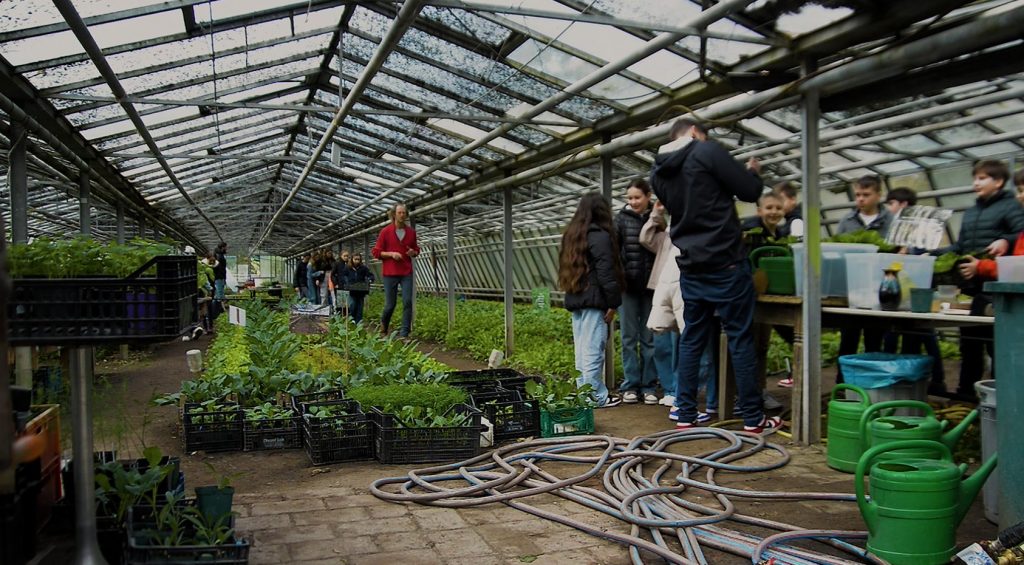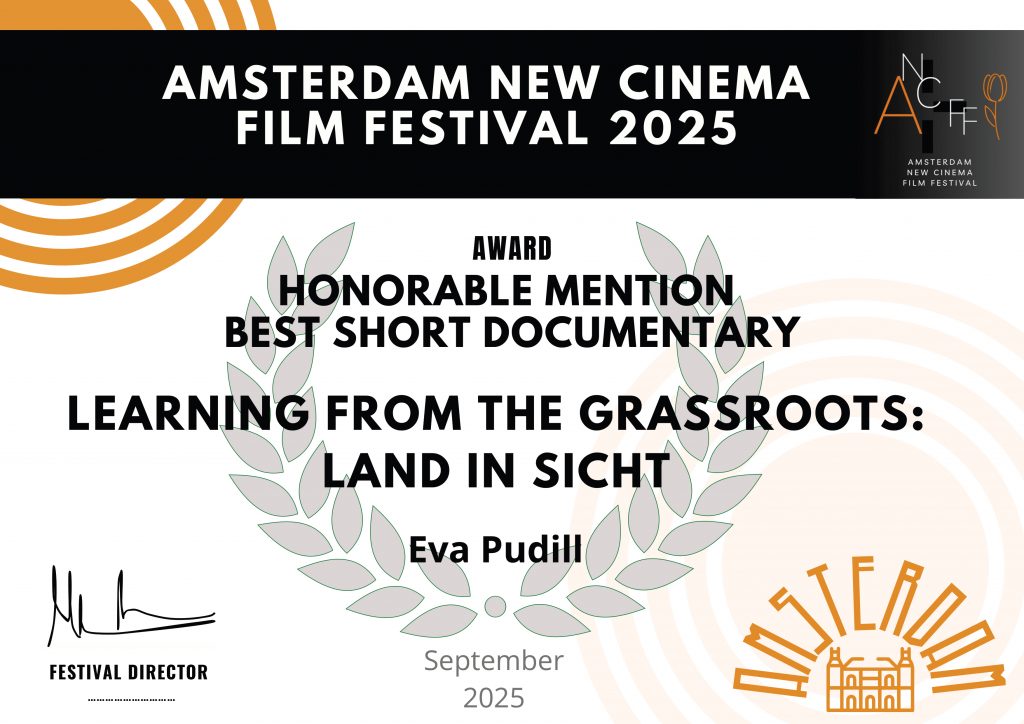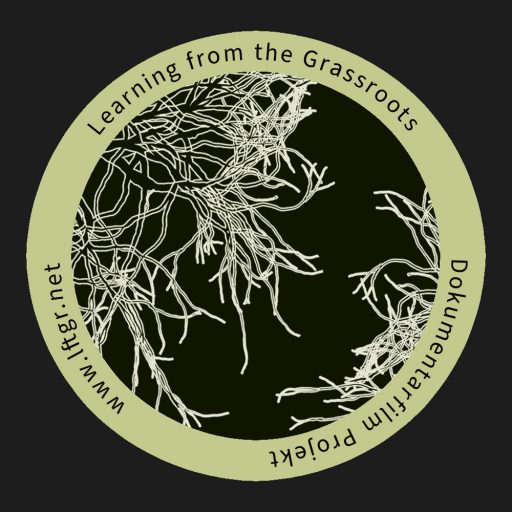“Learning from the Grassroots” focuses on committed civil society networks that demonstrate that truly sustainable changes in the area of food sovereignty are almost always initiated by civil society actors, while bureaucratic regulations and rules often lag behind or even hinder sustainable change.
This tension is particularly evident in the realm of seed politics. Civil society networks that advocate open access, diversity and seed sovereignty claim that bureaucratic rules designed for industrial agriculture are overwhelming for small farms and independent breeders. Rules that were once intended to ensure quality now often turn into almost insurmountable obstacles.
Meanwhile, the seed industry is putting increasing pressure on regulators to relax the rules surrounding new genetic engineering techniques. If regulations were to be relaxed, this could lead to a surge in patents and further consolidate the power of a few multinational corporations over key resources in the food system.
The future of seed diversity lies in the hands of a vibrant civil society
Thus, seed diversity is under threat from two fronts: on the one hand, bureaucratic regulations; and, on the other, the profit-driven ambitions of international corporations.
This makes it clear that the commitment to diversity and to seeds as a common good today rests entirely on the shoulders of civil society actors.
This commitment is under increasing pressure. The human right to pass on seeds and preserve climate-resistant, locally adapted, and traditional varieties is being restricted worldwide.
Strict seed regulations such as the European PRM (the Regulation on the Production and Marketing of Plant Reproductive Material) require varieties to meet specific criteria. The so-called DUS criteria (distinctiveness, uniformity, stability) are key requirements of the Seed Marketing Ordinance. They are intended to ensure that each variety is clearly identifiable, genetically uniform, and remains stable over generations.
When uniformity and stability become the benchmark
Traditional or farm varieties typically consist of a heterogenous population. For example, an old wheat variety may contain plants of different heights, grain sizes, and ripening times. These varieties contain many genetic variations, increasing their adaptability to changing environmental conditions. However, according to the DUS criteria, they are not uniform enough.
Additionally, traditional varieties change slightly with each generation due to environmental influences and the human selection processes; therefore, they are dynamic rather than static.
What is an advantage for resilience: the genetic variability and dynamics of locally adapted land race varieties, is assessed as a „lack“ of uniformity and stability in the DUS system.
Modern varieties have another advantage in this system when it comes to distinctiveness because they are generally bred for specific characteristics. Whereas, with traditional varieties, the boundary between two varieties is often blurred.
Additionally, the DUS system requires detailed documentation and formal testing procedures, yet the origin or genetic definition of farm varieties is often unclear.
Standardization instead of diversity: How DUS criteria promote monocultures
All these requirements favor high-yield industrial varieties while marginalizing traditional, locally adapted and farmer-bred varieties. Even if these varieties are ecologically valuable, farmers cannot sell or pass them on, or only in very small quantities.
Consequently, many varieties are disappearing, resulting in a loss of genetic diversity. Yet, over centuries, these traditional crops have adapted to local soils, climatic conditions and cultural needs. They are not relics of the past, but an integral component of food sovereignty, agroecological resilience and our cultural identity.
The exemptions created by the EU for conservation varieties and landraces – which, moreover, may only be passed on under strict conditions and in limited quantities – as well as the category of „heterogenous material“ represent a first step toward recognizing the importance of adaptability and genetic diversity. Nevertheless, these measures do not go far enough. They push diversity into a legal and economic niche instead of promoting it as an equal basis for agricultural production.
Genetic resources
In practice, traditional varieties and local land races continue to function primarily as a genetic resource for industrial breeding, without the preservation of diversity itself being recognized as a legitimate and worthy form of agriculture. Rather than strengthening decentralized smallholder seed culture, this creates a system in which diversity is tolerated but not truly enabled.
Consequently, those who actively contribute to preserving and developing genetic diversity, such as smallholder farms, community gardens and regional breeding initiatives, continue to face legal, financial and organizational hurdles.
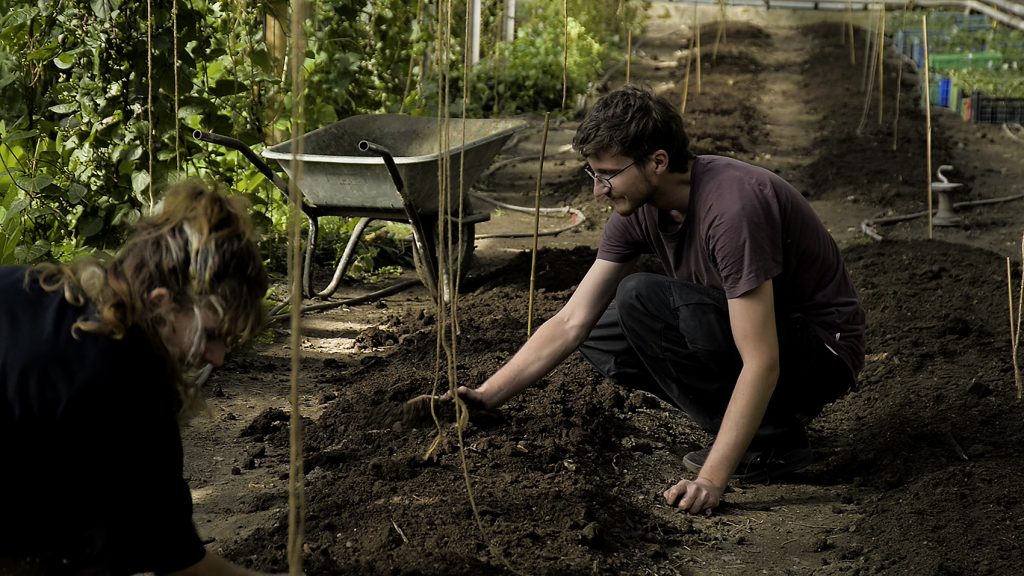
First stage of seed privatization: the registration of commercial varieties
The registration of commercial varieties poses a significant challenge for smallholder and community initiatives under many national seed regulations. Once a variety has been registered, the registrant can apply for plant variety protection. This gives the breeder exclusive rights to propagate and distribute the variety. Others cannot sell or reproduce the seeds without the breeder’s consent. However, exceptions are made for research and breeding purposes – the so called „breeders-exemption“ – as well as for farmers‘ rights to reproduce seeds, but these are limited. Furthermore, this protection only applies to the specific variety in question, not to all plants with similar characteristics.
If a variety originally emerging from farming practice, community breeding or conservation work is later registered as a commercial variety, its status changes fundamentally. The exclusive use rights remove the variety from the community cycle and essentially privatize it. This means that seed savers can no longer freely exchange, pass on or reproduce seeds without facing legal consequences. Even sharing seeds for free can be considered unauthorized distribution. This means that collectively created cultural assets become commercial commodities. Some seed saver associations view this as a form of „seed theft“ – the legalization of the appropriation of biodiversity created by farming communities over generations.
This criminalizes something that serves the common good: preserving and transmitting living diversity. What appears to be a technical administrative procedure at first glance has profound social consequences. If the transfer of seeds is regulated, civil society loses its ability to influence the basis of our food supply. This paves the way for a situation in which what was once common heritage increasingly falls into private hands.
Forgotten diversity, repackaged: Who benefits from plant variety protection?
Registration as a commercial variety requires novelty. In the context of plant variety protection, this means that a variety must differ from all known or commercialised varieties. However, the definition of ’novel‘ can be problematic when it comes to varieties used by certain communities that are neither officially registered nor commercially marketed. Often, a variety has been grown, cultivated and exchanged locally for years. Nevertheless, if it has not been commercialized on a large scale or officially documented, it may still be considered novel from a legal perspective when registered as a commercial variety.
Indeed, there have been instances where companies have „rediscovered“ traditional or old varieties and registered them as new varieties. This has prompted discussions about whether the original communities or farmers who developed and preserved these varieties are entitled to rights or compensation. The novelty requirement may be contested if evidence is provided that the variety is well-known or widely used within specific communities. However, this can be challenging to substantiate, particularly in contexts where community practices may be informal or lacking in documentation.
Regime of selective strictness
By focusing on private-sector breeding, the current plant variety protection framework effectively exploits the openness of traditional seed systems, thereby enabling the appropriation of collectively maintained varieties. This problem is exacerbated in particular by the fact that many countries in the Global South are late entrants to the UPOV system under trade agreements and are obliged to adopt the latest version from 1991. In contrast, numerous European countries still apply older UPOV regulations, which are furthermore balanced by significantly more comprehensive documentation of traditional varieties.
This asymmetrical effect is particularly evident when considering the gradual tightening of UPOV regulations, which culminated in the 1991 version. Earlier agreements permitted greater freedom in terms of reproduction and informal use, but these exceptions were gradually restricted while the scope of protection was expanded to include, for example, harvested material and genetically closely related varieties. This not only shifted the system in favor of exclusive rights of use, but also created structural disadvantages for seed systems central to the preservation biodiversity and food sovereignty in the Global South.
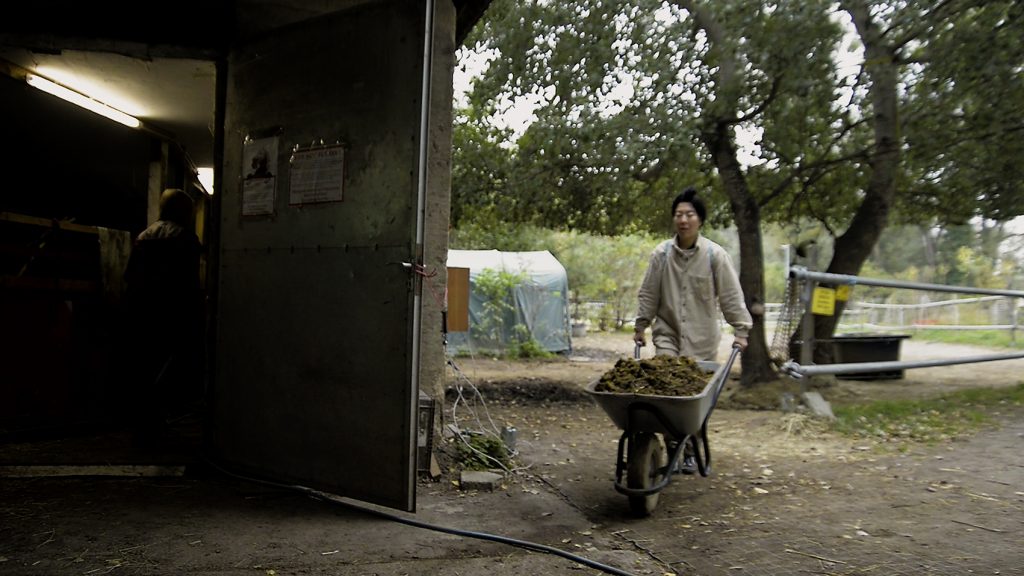
From common to intellectual property
Another level of privatization of seeds is reached by patenting. The corporate seed lobby is pushing for the deregulation of new genetic engineering technologies (NGT), and for them to be treated equally with conventional breeding methods. This would give international seed corporations a dangerous gateway through which they can expand their patent rights. Patents were originally intended to protect technical inventions. The patenting of plants resulting from conventional breeding is currently prohibited under EU law.
However, by legally equating new genetic engineering techniques with conventional breeding methods, corporations are able to patent plant traits that also occur naturally. These include disease resistance, drought tolerance, and other adaptive traits. In many cases, these traits have indeed not been developed through technical inventions, but rather through classical breeding, or random mutations. The equation between NGT1 and conventional breeding enables companies to create monopolies on key plant traits that were previously in the public domain.
The argument put forward by the biotech lobby is as convenient as it is misleading: They claim that new genetic techniques (NGT1) are just as „harmless“ as traditional breeding methods, which is why they should be treated equally. Through this equation they are trying to erase the distinction between natural evolution and laboratory manipulation. This, in turn, is being used as a pretext to repeal regulations protecting biodiversity, farmers, and consumers that have applied to genetic engineering until now.
This framing serves three purposes for the biotech lobby: First, it portrays powerful CRISPR methods as risk-free. Second, it paves the way for deregulation. Third, it paves the way for even greater control over seeds and traits through intellectual property laws, including traits that could have been produced by nature or conventional breeding.
Why traceability matters
The proposed EU rules on new genomic techniques would greatly expand the scope of patents on genetic information. Under current GMO legislation, patents only apply to plants that are the direct result of patented intervention. This is partly because traceability requirements force companies to disclose methods for identifying their GM traits. Therefore, the traceability of seeds and plant characteristics plays a central role in maintaining transparency and fairness in the agricultural sector. Traceability makes it possible to trace the origin and development of a variety, thereby better protecting the rights of breeders, farmers, and conservationists.
However, without clear traceability, ownership claims and patent rights can become unclear, increasing the risk of unjustified monopolies and the appropriation of collectively created cultural assets. Patents on genetic information derived from NGTs could potentially apply to all conventional or farmer-bred seed varieties with similar traits, regardless of whether these traits arose through natural processes, traditional breeding, or accidental contamination. This would shift the burden of proof onto farmers, who would no longer be able to prove that patented traits did not originate from a patented process. Without traceability tools, this task would be impossible.
Faced with the threat of infringement claims, farmers may feel compelled to purchase patented seeds to protect themselves. Meanwhile, small seed producers could become dependent on the few multinational corporations that dominate NGT portfolios. This monopolization would likely lead to higher seed prices, fewer commercial seed varieties, and reduced on-farm agro-diversity, as farmers would lose the ability to freely save, use, or improve their own locally adapted seeds.
No monopoly on life – patents affect us all
This practice has the serious effect of increasing the market domination of a few multinational companies. Moreover, through international agreements such as TRIPS (the Agreement on Trade-Related Aspects of Intellectual Property Rights, administered by the WTO) corporations influence the legal processes of states and state unions. These agreements establish binding legal standards for how states must structure their intellectual property (IP) laws. This gives these multinational corporations ever greater control over agricultural production worldwide.
The flood of patent applications means breeders are faced with unmanageable licence fees, expensive laboratory analyses and legal uncertainties. They are constantly at risk of unintentionally infringing existing patents, which could result in legal and financial consequences.
If the EU does not introduce countermeasures soon, an increasing number of small and medium-sized breeding companies will be forced to close, as it already happened in the Commonwealth countries. This would not only reduce the diversity of cultivated varieties even further, it would also deepen farmers‘ dependency on international seed corporations, whose patented seeds come with strict licensing conditions and licence fees, limiting farmers‘ self-determination.
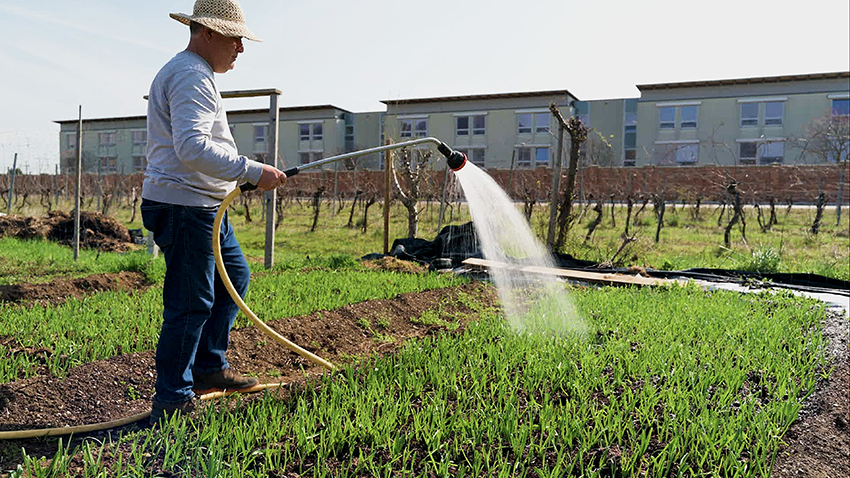
When „cutting bureaucracy“ becomes a cover-up for corporate interests
However, voting for right-wing parties in response to the European Union’s regulatory frenzy and the seed industry lobby’s influence on EU decision-making processes is heading in exactly the wrong direction. These parties are particularly susceptible to the influence of the pesticide and GMO seed lobby. They represent the interests of industrial agriculture and marginalize critical civil society movements, labelling them a „disruptive factor“.
Under the pretext of reducing „unnecessary bureaucracy“, regulations designed to protect us from excessive corporate greed are now being watered down or abolished in the European Union. These are regulations that protect the environment, ensure clean air and healthy food, guarantee fair and safe working conditions, and combat discrimination.
Center-right pact: power shift in the EU Parliament and its implications
Several legislative proposals have already been adopted without the European Commission first presenting an impact assessment, despite this being essential for informed decision-making. The additional use of the so-called fast-track procedure exacerbates the situation further, as it renders a thorough democratic debate in the European Parliament virtually impossible.
Furthermore, right-wing parties play a central role in putting pressure on civil society movements. They attempt to delegitimize committed groups, associations and NGOs by trying to withdraw their funding or publicly discrediting them. This makes the work of those committed to ecological and social sustainability even more difficult, especially in the areas of agriculture, biodiversity, sustainability, and food sovereignty.
Behind closed doors
Perhaps the debate about the European Union’s regulatory regime should be conducted in a more nuanced manner. The EU is undoubtedly built upon a dense web of rules and procedures. Decision-making processes within EU institutions are often opaque. Complex negotiations, such as the current trilogue negotiations on the deregulation of new genetic engineering involving the Commission, the Council and the Parliament, frequently take place behind closed doors. These negotiations are shielded from meaningful public scrutiny.
As a result, regulations emerge from a process that few citizens understand and even fewer can influence. This technocratic opacity reinforces the perception that Brussels operates in a world of its own, becoming increasingly alienated from the everyday realities it seeks to govern.
Populist simplification
However, the crucial question is not just how much the EU regulates, but also what is being regulated or deregulated, the reasons behind it, and whose interests are served. Without this distinction, the debate risks descending into populist simplifications that obscure rather than clarify.
A blanket rejection of regulation could inadvertently undermine the forces of civil society that are vital for a functioning democracy, namely those dedicated to the common good and acting as a safeguard against the excessive power of large corporations. Therefore, meaningful criticism of EU regulation must focus less on quantity and more on purpose, transparency and accountability.
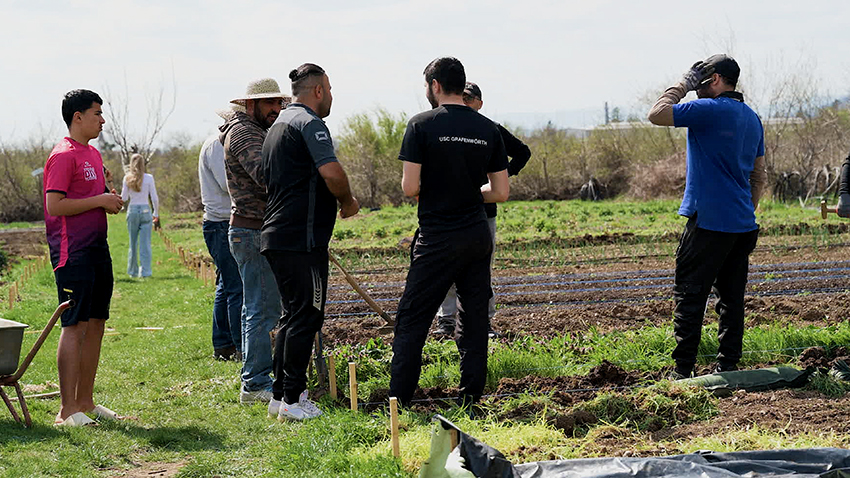
The power of civil society networks
While the powerful lobby of seed and pesticide companies in Brussels is gaining ever-increasing influence, a decentralized counter-lobby has long since formed. This civil society network consists of environmental NGOs, organic certification federations, organic farmers federations, interest groups of organic breeders, farmers‘ working groups, associations representing farmers‘ rights and associations for the preservation of old varieties, consumer protection NGOs, institutes of critical scientists, associations promoting the free distribution of seeds, seed companies that work according to strict organic guidelines and reject the patent system, non-GMO associations, and many more besides.
Despite their limited resources, this European counter-lobby has achieved significant goals in recent years, such as rejecting a restrictive EU seed regulation draft in 2014 that would have effectively banned old varieties. Nevertheless, pressure from industry remains high, and many civil society actors encounter closed doors in Brussels.
Seed sovereignty spreads around the world – carried by civil society
The struggle against the privatization of seeds – the common heritage of humanity – is not limited to Europe. Across the globe, civil society networks are at the forefront of the resistance, rather than governments. Governments are often constrained by international trade agreements and under pressure to adopt restrictive seed marketing laws. Such legislation favors corporate control and intellectual property claims over biodiversity. The agreement of the International Union for the Protection of New Plant Varieties (UPOV) is one example of this.
In contrast, farmers‘ organizations as La Via Campesina, indigenous communities, NGOs and grassroots movements actively defend farmers’ rights and seed sovereignty. Their efforts can be seen throughout Asia, Africa and South America, where traditional agricultural knowledge remains deeply rooted in community life. Even in Commonwealth countries, where private ownership and patent systems are already deeply entrenched, civil society initiatives and committed farmers and engaged breeders continue to challenge legal frameworks. These movements advocate open access to seeds, the preservation of biodiversity, and the recognition of seeds as a shared common good rather than a commodity, across continents.
Defending diversity, resisting control: Europe’s fight for seed sovereignty
Civil society organizations in Europe are actively shaping the European Union’s seed policies. Although they are up against a powerful industrial lobby with substantial financial resources, civil society’s strength lies in its ability to forge broad alliances and galvanize public support.
Their strategies are diverse: they engage directly in political processes at national and Brussels levels, participate in consultations and collaborate with sympathetic policymakers. At the same time, they raise public awareness through campaigns, educational initiatives and media outreach. Many networks launch petitions, organize public actions, and connect citizens with the political decisions that often remain invisible yet affect seed sovereignty.
Beyond advocacy, civil society groups initiate concrete projects, such as seed banks, participatory breeding programs and local regional biodiversity conservation initiatives, that demonstrate viable alternatives to corporate-controlled seed systems. Through this combination of political engagement, public mobilization and practical experimentation, they challenge the dominance of the seed industry and defend seeds as a common good.
Our food security is at stake
In times of climate crisis and biodiversity loss, the fight for free, diverse seeds is becoming increasingly important – not only for farmers and breeders, but for society as a whole. Across Europe, countless initiatives have joined forces to promote agricultural policies that value diversity, resilience, and the common good. From community seed exchanges to cooperative farms to networks of seed keepers, citizens are reclaiming control over one of our most important common good: Seeds – the basis of our food supply.
Their commitment shows that change starts from the grassroots – with people who refuse to let diversity and freedom be replaced by corporate control. Thanks to the dedication of these civil society networks, the influence of large corporations in Europe has been set back for several decades. But the fight continues. The future of our food security depends on our collective courage to protect seeds, nurture diversity, and rethink how we grow and share what sustains us.
EU: Head-on attack by corporate lobbyists
But what happens next? While some countries in the Global South, such as Mexico and Kenya, have already started to ban GMOs — with Mexico even enshrining this rejection in its constitution — the industrial seed lobby seems to have made a concerted effort in recent years to finally break into the European market and push through new genetic engineering techniques such as CRISPR. Therefore, their stated goal is to weaken or even abolish the European Union’s existing GMO regulations.
If the European Union were to follow these corporate interests and deregulate genetic engineering, the consequences would be serious: Farmers could lose control over their seeds, small and medium- sized breeders were forced to give up their business, consumers would no longer know what is actually on their plates, and biodiversity would suffer further from the spread of patented, uniform crops. At stake is not only food sovereignty — the freedom to decide how we grow, exchange, and protect our seeds — but even Europe’s food security.
The question is: Will the decision makers in Europe listen to its citizens and choose a path of diversity and responsibility, or will they once again bow to corporate interests?
Goodbye freedom of choice?
Aside from the looming flood of patents: How can separate production chains – from seed cultivation to transport, storage, and processing – be ensured and monitored without mandatory labeling? Who bears the responsibility and the costs if an organic farm becomes contaminated by NGT plants and loses its certification? How can the organic trade credibly guarantee that food products are truly GMO-free when labeling requirements are abolished, leaving consumers with no means to make informed choices?
And last but not least: How are genetically modified organisms that may harm human and animal health or entire ecosystems supposed to be withdrawn from circulation if no system for traceability is in place? In short: Under these conditions, how can the EU’s precautionary principle – a cornerstone of European environmental and consumer protection policy – still be upheld?
